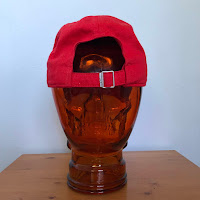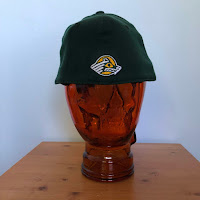On
the morning of January 1, 2020, at age 55, I awoke fully uncommitted to a resolution
to lose some weight. And after weighing
in at a portly 225 pounds, what little motivation I might have had disappeared
faster than the deviled egg platter at a family gathering.
December 27,
2019
Despite my lack of ardor for the task, I did have a goal:
get down to my driver’s license weight of 185 pounds. This would allow
me to get back into a favorite pair of blue jeans that hadn't seen the light of day for years, and to fit into a recently acquired Seattle University baseball Jersey. The hardest part would be simply getting
started.
I lost lost a lot of weight in my forties when I took up running. I had never run for exercise before, but
quickly got hooked; some would say obsessed. I ran several races including two marathons,
finishing the Portland, Oregon marathon in 3:10:26 in 2007. In 2010 I totaled over 1,000 miles running and
another 1,000 cycling to and from work. Eventually
life got in the way and by the mid-2010s - to quote Forrest Gump – “my runnin’
days was over.”
In early 2020 there were already rumblings of a worldwide
pandemic. A local nursing home near Seattle became the first Covid “hot spot” in the United States. By March we were wearing masks in
public and at work. Our daughter, who was slated to
spend the semester in Amsterdam, was unceremoniously kicked out of
Europe. Businesses - including fitness
centers - were closing. The solitary,
outdoor sport of running however, was still an option.
I tried a few times to get rolling. The chubby-cheeked selfie below was taken in May of 2020
after a run. I had begun to change my eating habits and had already dropped a few pounds, but runs were sporadic and
infrequent.
Credit for getting me over the hump goes to my dear wife
Ziba. She had been urging me to get
moving for some time, while knowing in her heart that I might take it to extremes 😉. It wasn’t until July 3rd that I started
running consistently. I ran for 754 minutes that month (tracking time rather than
mileage). I weighed 218 pounds on July 15th.
As the pandemic wore on, I wore a neck gaiter while
running in public to cover my nose and mouth when I encountered people. Occasionally I'd forget the gaiter and more than once felt the scolding glare of a masked passerby. It was odd to see runners, pedestrians, and
dog-walkers cross the street to avoid each other.
I ran for 878 minutes in August and 935 in September, which
included seven straight days on the home treadmill due to poor air quality from
wildfires burning in Canada and Eastern Washington. Treadmill runs are a drag but music makes them tolerable and the cushioned surface gives my joints a break from pavement pounding. For variety I began to combine resistance training
- dumbbells, body-weight, and medicine ball work - with the treadmill runs. Running, inside or out, became a diversion from the gloomy
pandemic predictions and presidential poppycock. Each minute I ran was a minute that I wasn't doom-scrolling. I went under 200 pounds
on September 20th, now aged 56.
There seemed to be an unusually high number of celebrity deaths in 2020. The year began with the losses of Neil Peart and Kobe
Bryant in January, but October stood out for the passing of baseball Hall of
Famers Bob Gibson, Whitey Ford, and Joe Morgan; actor Sean Connery; and guitar great
Eddie Van Halen. Meanwhile, I hit the mean streets for a new monthly high of 1154 minutes. By Halloween
I was down to 190 pounds, having exorcised 15% of my body weight since the
start of the year.
October 31,
2020
The more weight we lose, the more challenging it becomes
to lose additional weight. This is because the body tends to store fat as a long-term
energy buffer. It’s an evolutionary adaption in the event of food scarcity. To avoid a plateau I upped the ante on my workouts in November by doing
my first 60-minute runs and by increasing the volume of resistance training. I'd find out later that what and when we eat are just as important to weight loss. On the 15th I dipped below my goal weight. In other news, there was a presidential election.
November 15, 2020
As expected, I was able to slip into the denim and the baseball
jersey, but will likely never wear those pants again. At the start of this adventure, I honestly didn't know if I could hit my target. But once I did I wasn’t satisfied with my body composition, so I decided to take it to extremes...





























